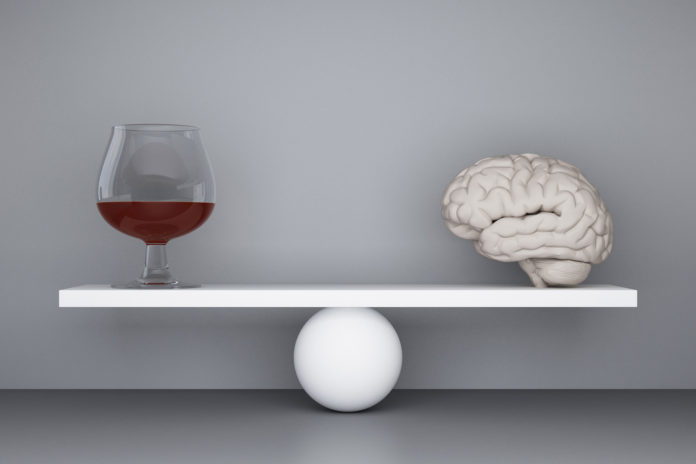Alcohol has a profound effect on the complex structures of the brain. It blocks chemical signals between brain cells (called neurons), leading to the common immediate symptoms of intoxication, including impulsive behavior, slurred speech, poor memory, and slowed reflexes.
However, there is conflicting evidence on whether light-to-moderate alcohol consumption shows similar negative associations with brain structure. To address this, scientists at the University of Pennsylvania examined the associations between alcohol intake and brain structure.
They found that alcohol consumption, even at modest levels, may also carry risks to the brain. Multimodal imaging data from 36,678 generally healthy middle-aged and older adults suggests that light-to-moderate alcohol consumption was associated with reductions in overall brain volume.
With the level of alcohol consumption, this link grew stronger. For example, in 50-year-olds, as moderate drinking among individuals increases from one alcohol unit a day to two units, significant changes are observed in the brain equivalent to age two years. Going from two to three alcohol units at the same age was like age three and a half years.
Gideon Nave, a corresponding author on the study and faculty member at Penn’s Wharton School, said, “The fact that we have such a large sample size allows us to find subtle patterns, even between drinking the equivalent of half a beer and one beer a day.”
In previous studies, scientists used the UK Biobank, a dataset with genetic and medical information from half a million British middle-aged and older adults. They obtained biomedical data from this resource and employed it in the current study.
More specifically, they observed brain MRIs from more than 36,000 adults in the Biobank, which can be used to calculate white and gray matter volume in different regions of the brain.
Nave said, “Having this dataset is like having a microscope or a telescope with a more powerful lens. You get a better resolution and start seeing patterns and associations you couldn’t before.”
To understand potential associations between drinking and the brain, it was essential to control for perplexing factors that could cloud the relationship. The team controlled for age, height, handedness, sex, BMI, smoking status, financial status, genetic ancestry, and county of residence. They also corrected the brain-volume data for overall head size.
The volunteer participants in the Biobank had responded to survey questions about their alcohol consumption levels, from complete abstention to an average of four or more alcohol units a day. When participants were grouped according to the level of consumption, a small but apparent pattern emerged: The gray and white matter volume that the individual’s other characteristics might otherwise predict was reduced.
Going from zero to one alcohol unit didn’t make much of a difference in brain volume, but going from one to two or two to three teams a day was associated with reductions in gray and white matter. It gets worse the more you drink.
Scientists plan to conduct further studies to help answer additional questions related to alcohol use.
Journal Reference:
- Davies, R., Aydogan, G., Jagannathan, K. et al. Associations between alcohol consumption and gray and white matter volumes in the UK Biobank. DOI: 10.1038/s41467-022-28735-5
